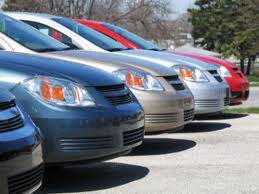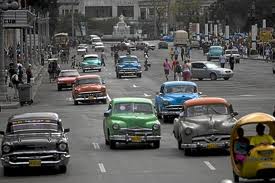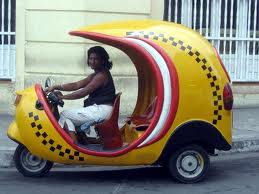|
Other public transport options, excluding the Cuba bus and Cuba train services, are to rent a car, hitchhike or take a taxi.

Hiring a Car
Renting a car is a great way to explore Cuba and ensure that you see all the sights of the country before you head home.
Hire cars tend to be fairly new models, certainly far newer than many of the cars you see on the Cuban streets. Roads tend not to be busy outside of Havana and rental costs include insurance. If you are travelling in high season, ensure you reserve your vehicle in advance, or you will find there are no cars available.
Once you have hired a car, driving is the more difficult part with street and road signs not marked, making it easy to get lost or allowing further opportunity to explore off the beaten path, depending upon your point of view. Many small roads are in very poor conditions, but main roads are driveable if due attention is paid.
Watch out for the PARE sign, meaning stop. They are usually strategically placed before train lines and if you are caught not stopping, even when there is no train approaching, you will be fined. You should also watch out for traffic lights as the lights are not as strong as those we are used to and the light itself is often placed a distance after the area you need to stop at, ie at the back of the box junction and not the front.

Always be aware that you can see anything on the roads in Cuba - cyclists going the wrong way on a one way street, crater-like potholes and even horse drawn trailers. There are also a number of checkpoints across the country where you will need to reduce your speed or risk being fined. Any fines will be deducted directly from the car rental deposit money upon return of the vehicle.
Whenever you see a petrol station, fill up your tank as you never know when you will see the next one.
Some countries recommend their citizens not to rent cars as if you are involved in a serious accident which results in injury or death, you cannot leave the country until the legal system is processing the case, which can take up to a year.

Taxis
Coco taxis are one of Cuba's unique forms of public transport. They are zippy, yellow coloured 3 wheelers that seat 2 passengers which are cheap for covering fairly short distances across town.
Other taxi's are the official tourist taxi's which are modern vehicles with air conditioning. They are not the cheapest taxi, but tourists found travelling illegally are subject to being cast out in the street where the Cuban official has caught them. Not a problem in the city, but difficult when inland or away from any towns.
A Taxi Collectivo is supposed to be used by Cubans only, however they will stop to pick up foreigners and anyone else until they are full. They are a cross between a taxi and a bus.

Hitchhiking
Look out for el amarillo, the yellow man, who will take your fare and flag down a vehicle on the road for you. Certain vehicles are required to pick up hitchhikers by law. El punto amarillo (the yellow point) can be found along main roads, often as Cuban equivalent of truck stop service stations which serve as pick up areas.
Within the city you need to look out for the person dressed in beige/yellow. Hitchhiking should only be attempted by those who have a good level of Spanish or you are likely to be turned away.
|